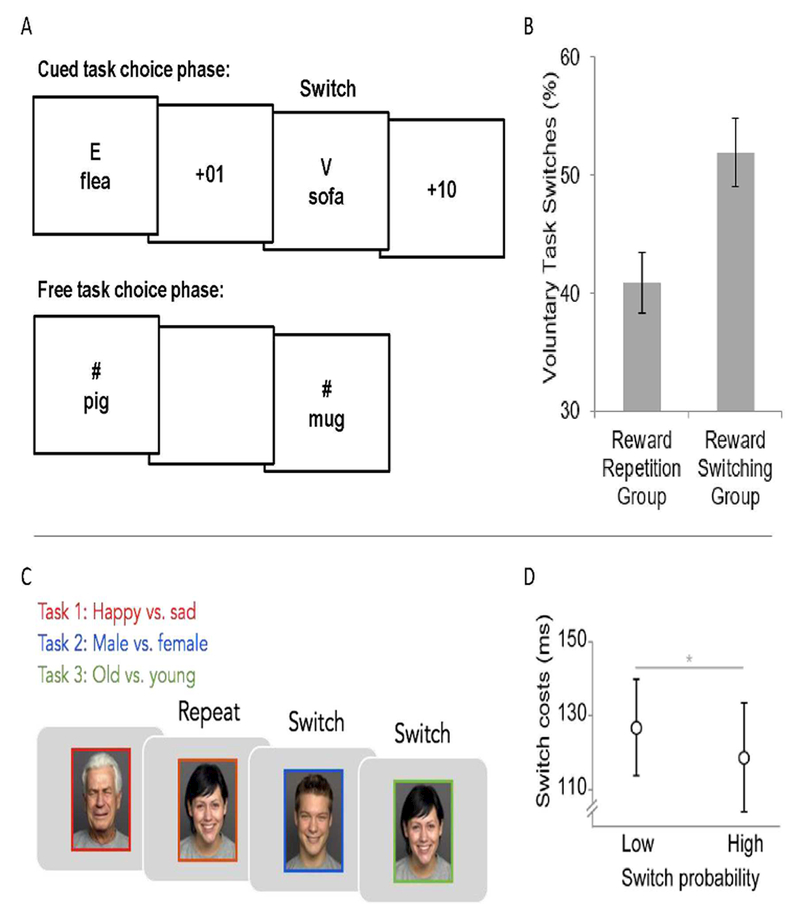Figure 1.
An illustration of the studies by Braem (2017) and Chiu and Egner (2017, Experiment 3). A. In Braem (2017), participants had to categorize words according to animacy (living or non-living) or size (larger or smaller than a basketball), depending on whether the task cue was a vowel or a consonant. Unbeknownst to them, depending on which group they were assigned to, they had an increased chance of obtaining a big reward following task switches versus task repetitions. In a second phase, no more rewards were given and participants were free which task to perform. B. The group rewarded more for task alternations showed more spontaneous task switching performance. C. In Chiu & Egner (2017), participants had to perform one out of three tasks (categorizing faces according to gender, age, or emotion) depending on the color surrounding a picture of a face. Crucially, some faces were presented more when task switched, while others were presented more when tasks repeated. D. The pictures associated to a higher likelihood of task switching showed increased task switching performance (i.e., smaller task switch costs). Reprinted with permission.

